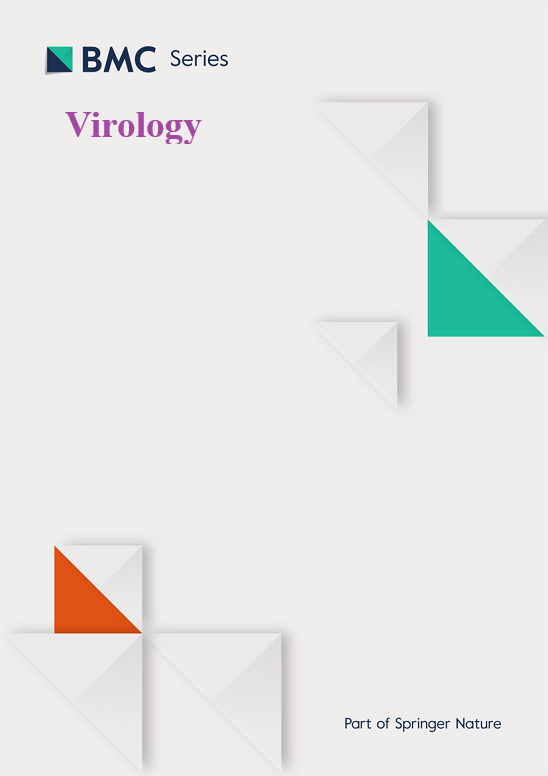Fine mapping of conserved neutralizing epitopes within the VP2 protein of Senecavirus A using monoclonal antibodies
IF 2.8
3区 医学
Q3 VIROLOGY
引用次数: 0
Abstract
Senecavirus A (SVA) is an emerging swine virus with global prevalence that causes vesicular disease (VD), clinically similar to foot-and-mouth disease (FMD), posing a significant concern for the swine industry. The capsid protein VP2 is a structural protein of SVA, playing a critical role in mediating viral entry into host cells and inducing the production of neutralizing antibodies. In this study, the SVA VP2 protein was expressed using the Bac-to-Bac baculovirus expression system. Six monoclonal antibodies (mAbs) targeting SVA VP2 protein were then produced by immunizing mice with the recombinant VP2 protein, named as 1A1F6, 3D5F9, 3E2C3, 5A6F5, 5F12D10 and 7H10C3, respectively. Among these, mAbs 1A1F6 and 7H10C3 exhibited neutralizing activity against SVA in vitro with IC50 values of 0.64 μg/mL and 1.21 μg/mL, respectively. Finally, a linear B-cell neutralizing epitope of 151SLQELN156 on the SVA VP2 protein was identified by determining the reactivity of the neutralizing mAbs with the truncated VP2 protein followed by peptide scanning. Peptide mutation analysis showed that the residues Ser151, Leu152, Leu155, and Asn156 within the epitope were essential for antibody binding. Multiple sequence alignment indicated that this epitope is highly conserved across various SVA strains. These findings provide a foundation for further studies on SVA and offer valuable support for the design of SVA vaccines.
利用单克隆抗体精细定位塞尼卡病毒A的VP2蛋白保守中和表位
塞内卡病毒A (SVA)是一种全球流行的新兴猪病毒,可引起水疱病(VD),临床类似于口蹄疫(FMD),对养猪业造成重大影响。衣壳蛋白VP2是SVA的一种结构蛋白,在介导病毒进入宿主细胞和诱导产生中和抗体中起关键作用。本研究利用Bac-to-Bac杆状病毒表达系统表达SVA VP2蛋白。用重组VP2蛋白免疫小鼠,制备了6种针对SVA VP2蛋白的单克隆抗体,分别命名为1A1F6、3D5F9、3E2C3、5A6F5、5F12D10和7H10C3。其中,单克隆抗体1A1F6和7H10C3对SVA具有体外中和作用,IC50值分别为0.64 μg/mL和1.21 μg/mL。最后,通过测定中和单抗与截断的VP2蛋白的反应性,然后进行肽扫描,鉴定了SVA VP2蛋白上151SLQELN156的线性b细胞中和表位。肽突变分析表明,表位内的Ser151、Leu152、Leu155和Asn156残基是抗体结合所必需的。多重序列比对表明,该表位在不同SVA菌株中具有高度保守性。这些发现为SVA的进一步研究奠定了基础,并为SVA疫苗的设计提供了有价值的支持。
本文章由计算机程序翻译,如有差异,请以英文原文为准。
求助全文
约1分钟内获得全文
求助全文
来源期刊

Virology
医学-病毒学
CiteScore
6.00
自引率
0.00%
发文量
157
审稿时长
50 days
期刊介绍:
Launched in 1955, Virology is a broad and inclusive journal that welcomes submissions on all aspects of virology including plant, animal, microbial and human viruses. The journal publishes basic research as well as pre-clinical and clinical studies of vaccines, anti-viral drugs and their development, anti-viral therapies, and computational studies of virus infections. Any submission that is of broad interest to the community of virologists/vaccinologists and reporting scientifically accurate and valuable research will be considered for publication, including negative findings and multidisciplinary work.Virology is open to reviews, research manuscripts, short communication, registered reports as well as follow-up manuscripts.
 求助内容:
求助内容: 应助结果提醒方式:
应助结果提醒方式:


